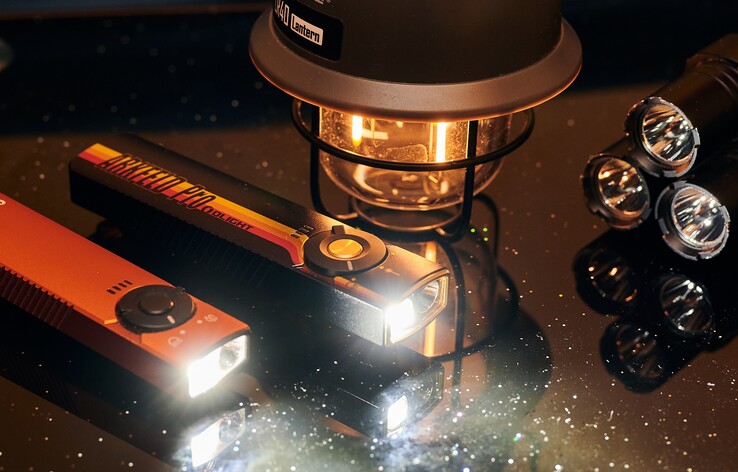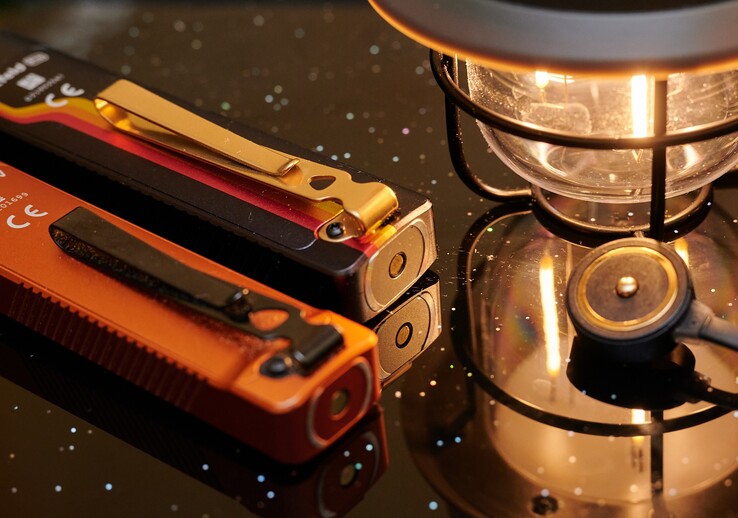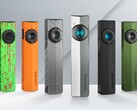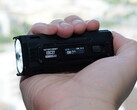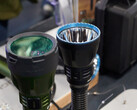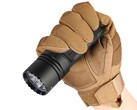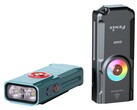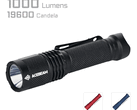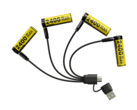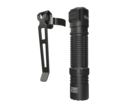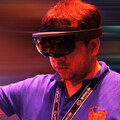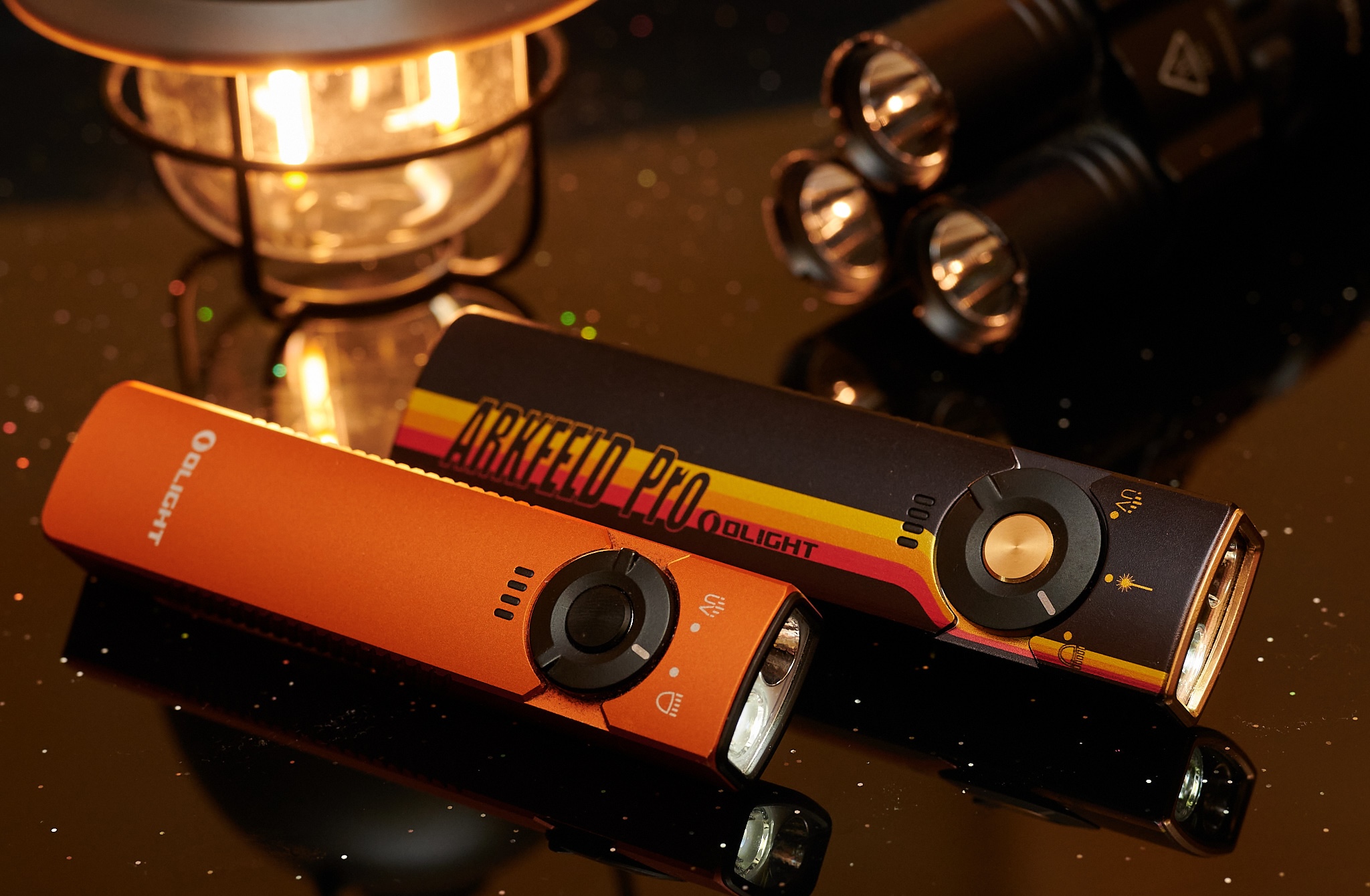
Olight Arkfeld Pro hands-on review: The flashlight upgrade with the laser pointer
Andreas Sebayang, 👁 Enrico Frahn, ✓ Anton Avdyushkin (translated by DeepL / Ninh Duy) Published 🇩🇪 🇫🇷 ...
Verdict
The Arkfeld Pro is a nice, reasonably compact flashlight that can be easily attached to the belt making it convenient to carry around. In contrast to the Arkfeld, however, the Pro is borderline heavy to attach to your cappy and take with you as a headlamp.
We are annoyed that the rotary switch doesn't look quite as high-quality as its predecessor. Overall, however, we like the improvements compared to the previous model, especially because the flashlight remains compact.
Switching between the three light sources is pleasant, even if Arkfeld users have to get used to it, as double-click and triple-click have been swapped. If you're not familiar with the predecessor, this won't bother you too much, even if we would have liked to be able to access turbo mode more directly. But that's a matter of taste.
The conceptual disadvantages such as the non-replaceable battery and the proprietary charging system with the magnetic cable naturally remain. However, if you always have the cable with you, the charging system is pleasantly uncomplicated and involves little fiddling. You just shouldn't lose it.
Unfortunately, the turbo mode can still only be used to a limited extent. It is therefore advisable to check the charging status of the flashlight from time to time. After all, the flashlight can easily lie around for several weeks. Self-discharge is negligible in this range.
Price & availability
The Arkfeld Pro is available in various colors at Olightstore and costs around 120 euros. On Amazon, Olight only offers the Arkfeld predecessor in its store.
Pros
Cons
With the Arkfeld Pro, Olight has another variant of the Arkfeld family in its range. In a way, it is the all-rounder with three light sources. Only the Arkflex is reserved for flipping the light head, but it has neither a laser pointer function nor a UV light function. The Arkfeld Pro has both in addition to its main function as an EDC flashlight. At around 110 grams and 12 centimeters, the flashlight is slightly heavier and longer than the Arkfeld.
Thanks to a belt clip that can be used in both directions, as with its predecessor, the Arkfeld Pro can also be attached to a cape. However, we find it slightly too heavy for this, especially as it is more front-heavy than its predecessor.
Our test sample uses the cold white version for the flashlight function, which Olight sells with a very wide range, just like its predecessor. This starts at 5,700 Kelvin and ends at 6,700 Kelvin. Anyone who demands an exact light color should therefore avoid the Arkfeld Pro.
The Arkfeld Pro is now available in a wide variety of designs. Olight is trying to set itself apart from the competition here. Our model is the racing edition.
In terms of the pure technical data, Olight has changed the light values. The maximum output in time-limited turbo mode is now 1,300 lumens instead of the previous 1,000 lumens. In practice, this doesn't make that much difference, even if the new flashlight is visibly brighter. As before, the light characteristics are rather widespread. Shining down a gear is not the strength of the Arkfeld Pro. However, it is good at broadly illuminating the immediate surroundings.
After about two minutes of use, the front of the Arkfeld Pro becomes uncomfortably warm. However, the larger lamp body makes the flashlight easier to hold than its predecessor.
According to the manufacturer, the turbo mode can only be used for a total of four minutes if the battery is full. In practice, however, we achieve higher values. However, the turbo mode weakens in the following minutes. After around six minutes, the turbo mode of a fully charged Arkfeld is brighter than that of the Arkfeld Pro. In general, turbo mode can still be used up to about half of the battery capacity. However, the Arkfeld Pro must be cool for this.
Different results can therefore be expected in summer than in winter.
The possibilities are reduced as the battery capacity decreases. In the lower quarter, for example, only three of the five continuous light modes are available. You should therefore make sure that the battery is well filled. Thanks to the four LEDs on the top, however, this can be quickly assessed.
The Arkfeld, which remains in the Olight range, had a fundamental disadvantage. Anyone interested had to make a decision: Either UV light as a second light source or a laser pointer. For our test of the Arkfeld, we opted for the UV version.
With the Arkfeld Pro, this is no longer necessary, as it has both the laser pointer in the middle and the UV light on the left-hand side next to the main light. Incidentally, the UV light is slightly stronger on the Arkfeld Pro. However, this is only noticeable in direct comparison.
Important for entering Switzerland: The laser class 1 logo is clearly printed on the flashlight. Then there will be no trouble at Swiss customs, who take a very close look at laser pointers. The laser pointer does what it is supposed to do and is easily recognizable in a typical presentation environment.
New mechanics and operation
With the Arkfeld Pro, Olight has slightly modified the rotary switch to switch back and forth between the three light sources. It is significantly smoother than on the Arkfeld and also wobbles a little more in the guide. This makes it look less valuable but has no effect in practice.
On the other hand, anyone switching from an Arkfeld to an Arkfeld Pro will first have to get used to it. With the predecessor, a double-click on the button was enough to activate turbo mode. The triple click triggers the flashing effect. With the Arkfeld Pro, this is now reversed. As we usually use turbo mode, this change bothers us. The triple click that is now required takes some practice, especially if you are used to the old operation.
Incidentally, it is worth reading through the instructions, as the EDC flashlight can do a lot more thanks to its combinations. For example, the laser and the main light can be used simultaneously. Only the turbo mode is not available.
There is also a moonlight mode, which is particularly weak but provides light for a week, as well as a time-controlled switch-off of the flashlight.
Charging with magnetic cable only
Olight has designed a magnetic cable as a charging mechanism within its system. This is proprietary and if you only have an Olight flashlight, you should take very good care of the cable so that you can always charge your device. Buying a USB-to-MCC cable in a store is hardly an option. You need to go to Las Vegas because there is an Olight Signature Store there.
Especially if you travel a lot, you should have the MCC cable with you - or alternatively a spare flashlight with a USB connection. The advantage of the MCC cable is the uncomplicated charging process. The flashlight is also easy to connect in the dark.
Incidentally, the battery with its 5.55-watt hours cannot officially be replaced.
Magnetic back holds the Arkfeld Pro on the fridge
As a pleasant side effect, the back of the flashlight is magnetic. It can then be easily positioned in a PC housing when tinkering, for example. As the light beam is rather wide, this works reasonably well despite the length of the flashlight. Of course, there are better solutions. We use Fenix CL09 for this, although it is no longer in the range. Nitecore's LA10 is also a better alternative for PC tinkering. However, the CL09 and LA10 are small mini lanterns and not EDC flashlights.
The Arkfeld Pro can be used more extensively, especially as the magnet is also strong enough for vertical surfaces to position the flashlight magnetically on a fridge, for example. However, the Arkfeld Pro is too weak for a magnetic glass wall. As the back of the flashlight is flat, it can also be placed on a table to shine upwards. This is easily enough to indirectly illuminate a 10-square-meter room. The Arkfeld Pro can do this slightly better than the Arkfeld, as it is somewhat brighter.
Transparency
The selection of devices to be reviewed is made by our editorial team. The test sample was given to the author by the manufacturer free of charge for the purposes of review. There was no third-party influence on this review, nor did the manufacturer receive a copy of this review before publication. There was no obligation to publish this review. As an independent media company, Notebookcheck is not subjected to the authority of manufacturers, retailers or publishers.




